What Is a Constructivist Classroom?
This post may contain affiliate links.
There is plenty of research to prove, that constructivist education is the best way for learners to learn. Research (see my bibliography below) shows that constructivist learning is congruent with how the brain learns.
Constructivist education is when learners actively construct meaning by building on background knowledge, experience and reflecting on those experiences.
Said in another way, constructivist learning is when “learners are given the freedom to think, to question, to reflect, and to interact with ideas, objects, and others—in other words, to construct meaning.” –Brooks and Brooks.
It’s “the idea that development of understanding requires the learner to actively engage in meaning-making.” – Brader-Araje & Jones (2002)
I’ve made a little comparison chart to make it more clear.
| (1950s?) Old-School Classroom | Constructivist Classroom |
| Teacher directed (didactic dissemination of information) | Learner-centered. Teacher as facilitator – students construct knowledge through critical thinking, manipulatives, primary resources, and hands-on activities. |
| Student works independently. | Student works collaboratively in groups, independently or in partners. |
| Small parts first. Big idea at the end. | Big idea first. All parts support big idea. |
| Correct answers are the goal. | Thinking and support of thinking are the goals. |
| Assessments are tests; separate from learning task. | Assessments are observation, conferences, daily work, portfolios and included in learning tasks. |
| Worksheets, workbooks, basal readers. | Books, journals, real-world situations, workshop approach. |
| Teacher evaluator. | Self-reflection, student evaluator and teacher evaluator. |
| Product based learning: All students will learn on demand the same thing at the same time aka. One-size-fits-all approach. | Process based learning: Learners create meaning and context by exploring new ideas and experiences, generating hypotheses, problem solving. |
| Teacher talks to (at) students; students expected to listen and absorb knowledge. | Teacher-student dialogue through conferring, questioning, and wondering. |
| Teacher makes all the decisions. | Shared responsibility and decision making. |
| Students answer questions. Empowered teacher. | Students ask questions. Empowered learner. |
| Individual learners. | Community of learners. |
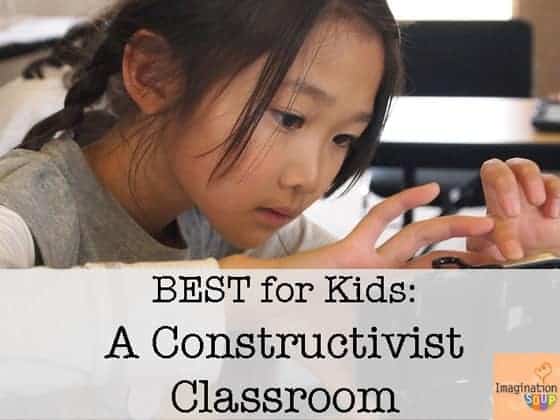
Let me give you a few examples.
Let’s say the learning goal is to learn how to recognize main idea from details.
An old-school classroom might provide the children with worksheets and multiple choice answers after a whole group lesson on the overhead with the teacher presenting the information.
A constructivist classroom would start with a mini-lesson where the teachers asks the kids about going to a birthday party at a familiar place such as Build-a-Bear. She might ask the class, what is the most important thing and what are some details? The teacher would write down the students’ responses on a large chart in two columns (big idea /details ) and as the learners respond encourage their thinking, ask for clarification, ask more questions, add some of her thinking. Then, the teacher would ask the learners to think about different scenarios such as big idea at dinner or big idea at shopping. Then, she’d show how to apply this to reading which they would tackle as a group. After that, the learners would get to apply and practice in their own self-selected books – using sticky notes to write down details or main idea, probably only one of the two until that concept is mastered, then switch. (Or work in collaborative groups with a shared text.)
Do you see the difference between the two classrooms?
Or, what if your learning goal is to introduce meaning in poetry?
An old-school (some call this traditional) classroom teacher would read the poem to the group or have the students round-robin read. (Gack – don’t EVER do this! Round Robin reading = no comprehension happening!) Then, she would ask for the learners what the poem means. THERE WILL BE A RIGHT ANSWER: the poem means that spring is renewal or something of the sort.
A constructivist teacher will read the poem and stop and share her own thinking outloud. “Reading this part about the hard dirt makes me think of trying to plant bulbs last year and I couldn’t dig very deep because the ground was frozen.” The teacher shows how reading poetry connects to her prior knowledge and makes her visualize. She then will ask them to read the poem and practice making connections to their own prior knowledge. Then, she’ll have them partner share – so everyone gets a turn to talk. If she asks what the poem means, and she may not, she’ll accept any answer that shows the student constructed meaning from the poem and his or her background knowledge.
Teachers, what do you see happening in your own classroom that you can share which illustrates how you help students construct knowledge?
Parents, what do you see (or not see) happening in your child’s classroom with regards to a constructivist approach to learning?
Resources:
Christie, A. (2005). Constructivism and its implications for educators. http://alicechristie.com/edtech/learning/constructivism/index.htm
Clarkson, B., & Brook, C. (n.d.). I can’t understand why I didn’t pass: Scaffolding student activities.
Grennon Brooks, J., & Brooks, M. G. (1999). In search of understanding: The case for constructivist classrooms. Alexandria, VA: Association for Supervision and Curriculum Development.
Honebein, Peter. C. (1996). Seven goals for the design of constructivist learning environments. In Wilson, Brent. G. (Ed.). (1996)
Thirteen Ed Online (2004). Constructivism as a paradigm for teaching and learning. http://www.thirteen.org/edonline/concept2class/constructivism/index.html
Zemelman, Daniels, & Hyde. (1998) Best Practice New Standards for Teaching and Learning in America’s Schools.
(also, anything by Vygotsky)
* ![]() Some rights reserved by flickingerbrad
Some rights reserved by flickingerbrad
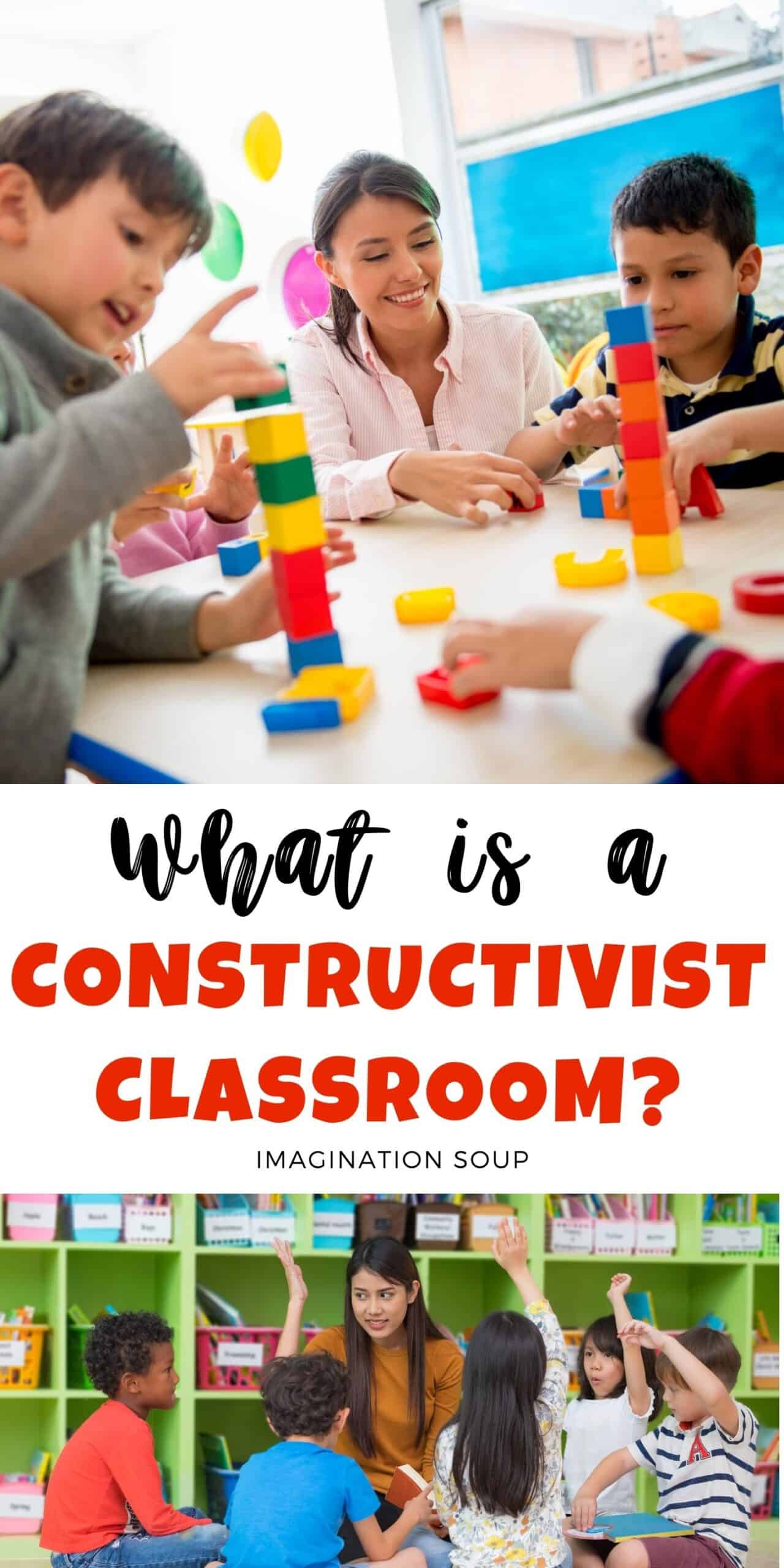
The walls in an exemplary (constructivist) second grade classroom
What Makes an Excellent Teacher?
Convergent vs. Divergent Thinking (What is the Difference?)

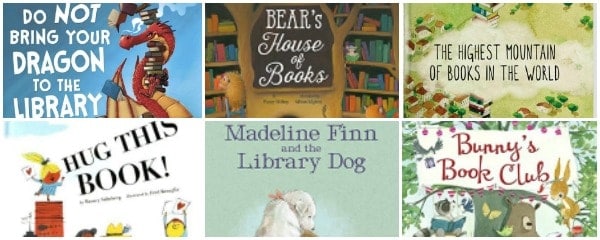
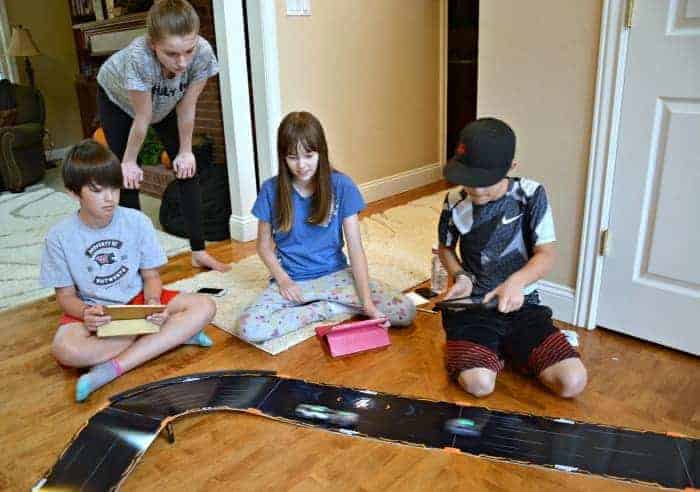
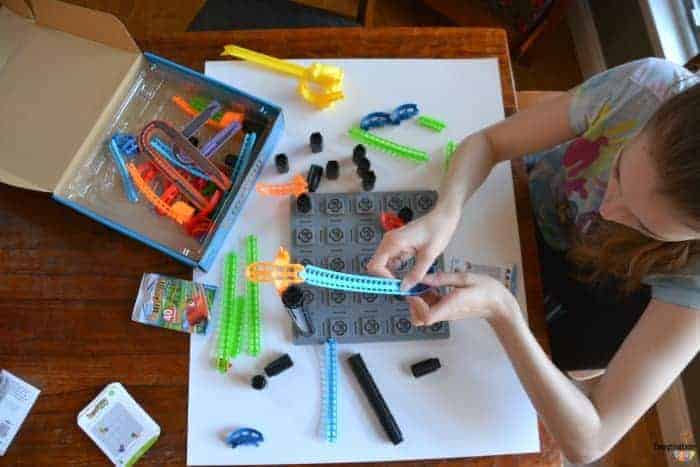

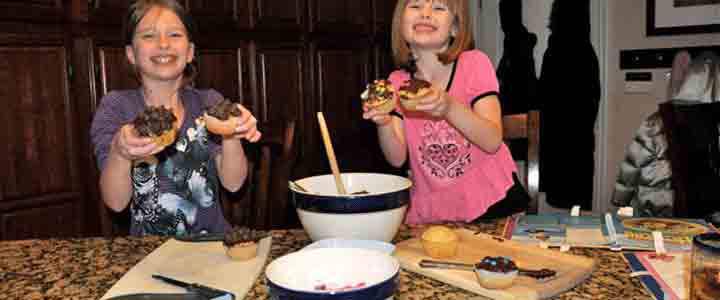
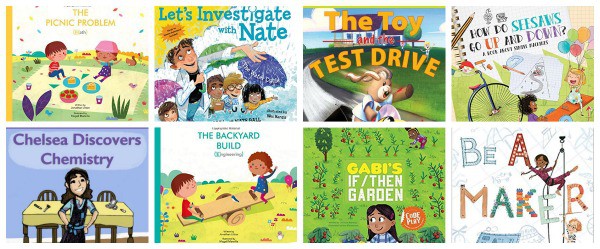
Melissa, thank you very much for this post. I’m a mid-20s parent of a daughter (2.5 years old) with no background in child development or education. I find posts like this immensely helpful because I love to read blogs like yours (I learn so much from them – philosophies, ideas, activities, the works!)…but I don’t always understand the lingo. I’ve read these terms on your blog before and not really known what you were referencing, but someone pointed me to this post today and…it really helps. Wish I’d found it earlier! I appreciate that you took the time to clarify.
I also have to agree with commenter Deborah above who said that children need everyone to know how their brain development works so that they can help them. What an incredible world this would be if everyone had a stronger understanding of children and how they learn and develop; I expect our society would fund better education systems and more respect for children, parents, and teachers if this were the case.
Hi Brian,
What a great list of resources you have added and I am sure for those who would like to dig deeper into the study of constructionism – they will find your links quite resourceful. But I hope you don’t mind my saying that I am surprised that you would come to a blog and expect to find an academically peered reviewed type being shared.
Perhaps it is because you are not a regular blog reader and lose sight of the average reader a blog engages.
A blog like this (as the writer explains) is really written for the purpose of exposing primarily young parents to concepts about education in simple language that may not otherwise be understood. Therefore, it will generally be written to gently guide and lead folks towards greater understanding of the more complex topics.
Your comment surprises me and seems to have missed the fact that the target audience is not college level students or professionals in the field of education. However, I find the article to be very well written and because it is a blog meant for those with very little experience in education, it seems to provide all the information necessary to create interest in learning more. Too much information or an over the top explanation will often times not reach a blog reader at all.
I think Melissa has done an outstanding job and clearly knows her readers well!
I understand the need for brevity, but I’m wondering why you didn’t mentioned or reference the works of John Dewey, Maria Montessori, Jean Piaget, or Paulo Freire here. While Piaget’s is well known, Dewey’s work on experience and education is equally important as are the others listed. While I agree and glad to see your mention of Lev Vygotsky without links to his work I think it is insufficient. I’d also add the Reggio Emilia Approach in the links to more information.
Though what I really want to share and I’d be remiss if I did not, is about one of the greatest educational thinkers of our time, Dr. Seymour Papert. Dr. Papert introduced to the world the powerful idea of constructionism (the “n” word, not the “v” word). Constructionism ( http://en.wikipedia.org/wiki/Constructionism_(learning_theory) ) is built upon the constructivist theory and in other words means learning by creating things (i.e. – constructing). It is quite possibly the best way of learning for anyone, especially young children. I like to think of it as the grounds for “learning by doing”. Here’s a wonderful paper on the differences by the brilliant Edith Ackerman http://learning.media.mit.edu/content/publications/EA.Piaget%20_%20Papert.pdf.
Here’s another, a speech to educators in Japan on Constructionism vs. Instructionism ( http://papert.org/articles/const_inst/const_inst1.html ) you might find helpful.
Papert’s work is also incredibly important, because he began working and playing with children and computers in the 1960’s. His insightful work and powerful ideas about computing for learning has yet to be realized in mainstream education today when computers and technology are ubiquitous.
I highly recommend to you and your readers to read the work of Dr. Papert (http://www.papert.org/works.html), read both of his important and influential books Mindstorms (the Lego Mindstorms were named after this book) and The Connected Family and follow the Daily Papert (http://www.dailypapert.org).
This blog post is meant to be an introduction for parents who haven’t heard of this philosophy of instruction and learning. Adding more research and theory would turn it into an academic paper for an audience of educators which was not my purpose.
Thanks for sharing your resources though!
I understand your audience, however, I hardly think your posts will become academic papers. I know your audience can relate to the work that Papert has written. I speak to parents all the time about his and the others work. In fact Dr. Papert wrote a book called “The Connected Family.”
I’ll be honest in saying the example you give for a constructivist lesson is superficial at best in terms of student-centered, constructivist learning. Constructivist (or constructionist) learning cannot be narrowed down to a single lesson. Why not share the ideas of project-based, challenge-based inquiry-based, or service-based learning with some strong learning experience examples for parents?
I applaud you in sharing the theory and am simply trying to provide constructive criticism through my comments and sharing of research on the subject. There is no need to get academic, but there is need to be thorough, especially given the topic incredibly important as the education of our children.
I’m checking out your Most Popular Blog Posts of the Year 2011. This is a great post. You are doing good work by putting this info out there for teachers to see and parents to expect. There are many changes that need to happen in public schools. This is one change we all need to push for. Thanks for sharing this info.
Just discovered this following links from your Most Popular Blog Post of the Year 2011 and found this very interesting. I trained to teach in a challenging school where although the results (the UK standard for assessing the value of a school unfourtunately) were poor the value added was great as we worked in all the areas of Constructivism – I then moved to an high achieving independent school and I was slated for teaching against the grain – not using worksheets, not spoon feeding the children the syllabus and allowing freedom of learning in my lessons. I have now left that school and although the behaviour was less challenging it is something that I never want to retun to. I now have children of my own and would never want them to go to a school where the norm is “Old School” and as next year we will be looking at schools I will be aiming to go and visit when lessons are in progress.